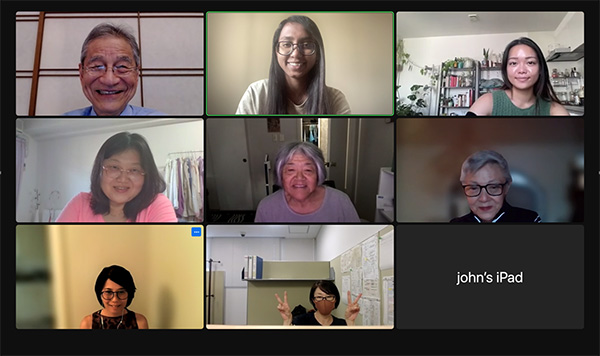Sakura Mentor
Experiencing Cross-Cultural Classroom as a TA in Japan
Nusrat Omar
Updated in December 2023
In Japan, where full scholarships often exempt students from the hardship of TA or part-time work, I discovered a unique opportunity to broaden my horizons. Introduced by a fellow student from my university, I joined the lecture of Professor John Ino from the University of California. This special English lecture series is a partnered program between Osaka University and University of California and is being conducted in an interactive seminar-style, based on group discussions about familiar topics. Participants share their thoughts in order to develop logical thinking ability and communication skills. This course is far from stereotypical lecture-exam based education system. Any student from Osaka University can attend this lecture series and students usually are very interested to this different style course study.
Additionally, this class is more interesting than regular classes, because Professor Ino is a dual heritage (Japanese American) person. In a land where fluent English-speaking Japanese professors are a rarity, his fluency has become a bridge for foreign students like me. It is a linguistic comfort zone that eases communication and provides a sense of belonging. The subject matter of critical thinking, while unrelated to my engineering background, has become a welcome break from the monotony of research.
With an enrollment of around thirty students each semester, the class serves as a mixing zone for not only individuals across disciplines, but also from different cultures. The curriculum focuses into social issues, human traits, and contemporary events like artificial intelligence.
Facilitating this exchange of ideas is no small task, especially given the constraints of the virtual world. The classes are held on Zoom because the professor lives in California and are relied heavily on the management of TAs. As TA, our primary duties include managing breakout rooms, guiding discussions, motivating students to share opinions freely, and summarizing the discourse. Lecture materials are distributed beforehand, leaving the class time dedicated solely to discussion. While Professor Ino initiates debates based on the provided topics, one TA manages the technical aspects of Zoom, ensuring a seamless experience for everyone involved. In this cross-cultural collaboration, the administrative support from Osaka University's office staff plays a pivotal role. She seamlessly navigates the bureaucratic works, handling the administrative needs of both students and TAs, contributing to the overall efficiency of the course.
My experience as a TA in Japan offered a unique perspective on the fusion of cultures and academic disciplines. The adaptability of education in the digital age and the collaborative spirit that transcends borders also amazed me. In the realm of critical thinking, I found not only an escape from the routine, but a community that embraced diversity.
Here is a picture of the happy group of the professor and TAs who hold the classes of this special course together.








